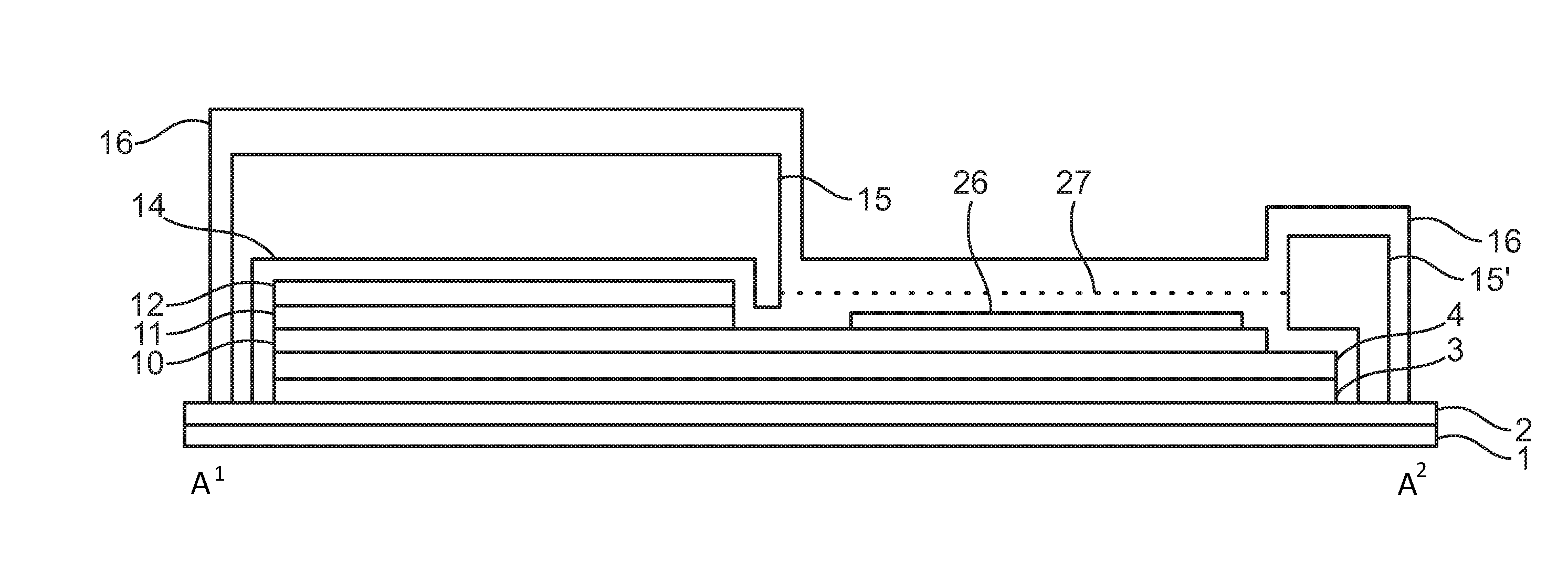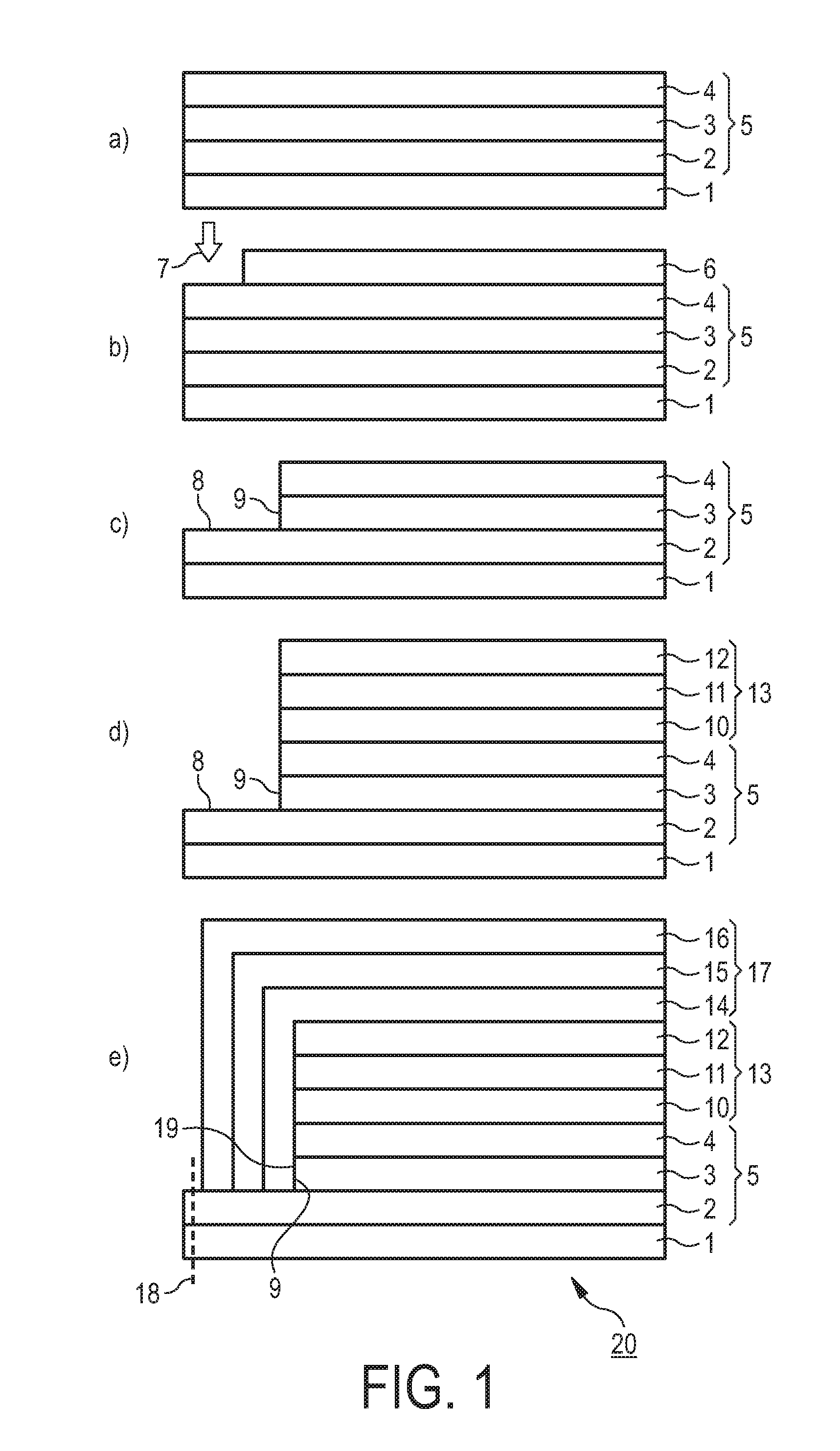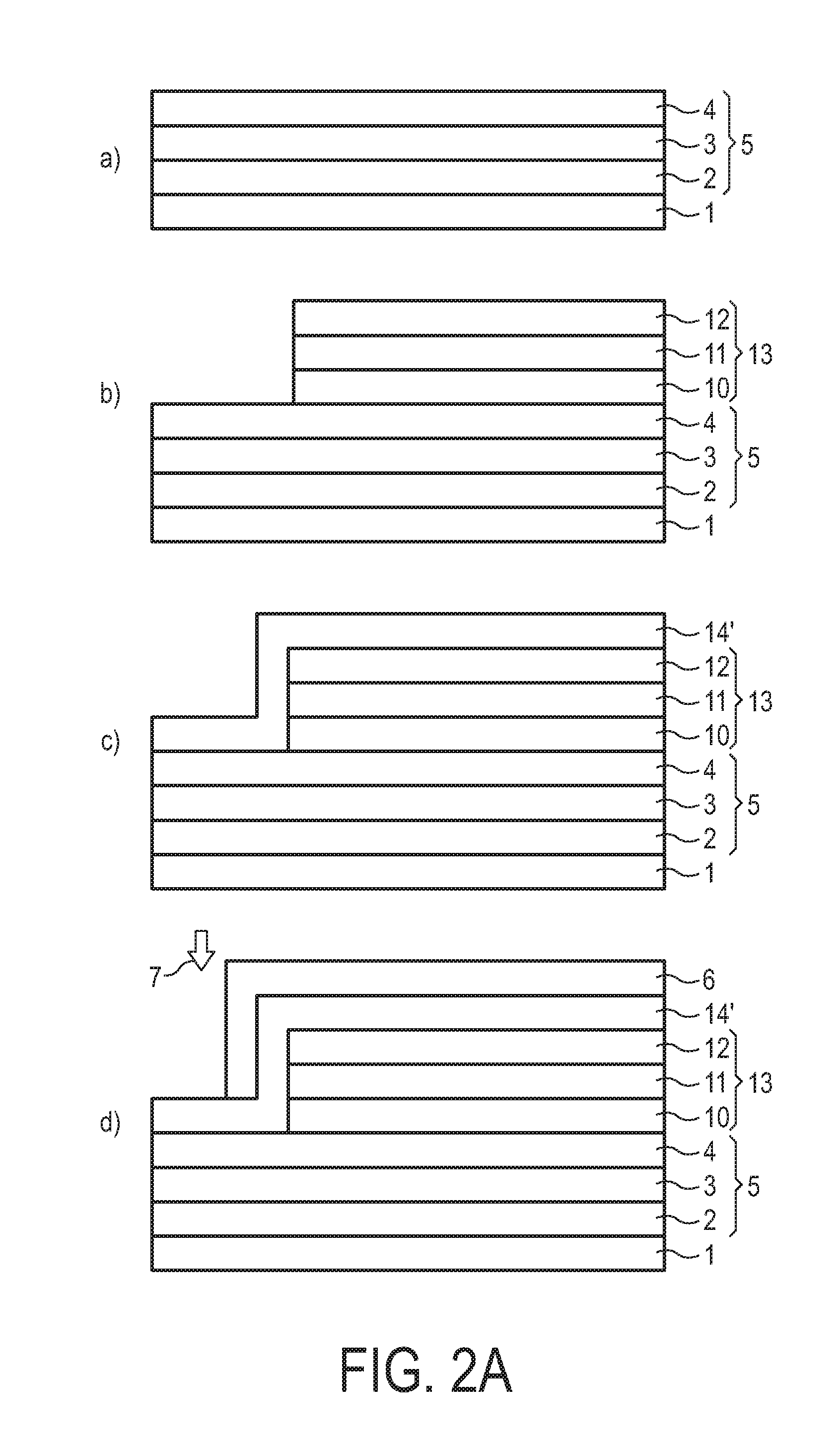Encapsulated semiconductor device and encapsulation method
a technology of encapsulation and semiconductor, applied in semiconductor devices, solid-state devices, organic semiconductor devices, etc., can solve the problems of reducing the service life of the substrate. , to achieve the effect of reducing side leakag
- Summary
- Abstract
- Description
- Claims
- Application Information
AI Technical Summary
Benefits of technology
Problems solved by technology
Method used
Image
Examples
Embodiment Construction
[0047]FIG. 1 illustrates a first concept for providing an encapsulated OLED device in accordance with an embodiment of the invention.
[0048]A barrier layer 5 is provided on a plastic foil 1 as a substrate. The barrier layer 5 includes an outer inorganic barrier layer 2 made of SiN, an organic barrier layer 3 and an inner inorganic barrier layer 4 (also made of SiN), as shown in FIG. 1a).
[0049]FIG. 1b) shows an organic etch mask 6 printed on top of the barrier 5 on a pre-defined area. In this case, the area left free by the etch mask 6 is at an edge of the plastic foil 1. As indicated by arrow 7, a SiN plasma etch process is applied to remove a part of the upper SiN layer (the inner inorganic layer 4) at the non-covered area. After that a second organic plasma etch process (not shown) is applied which removes a part of the organic barrier layer 3 of the barrier stack 5 and the organic etch mask 6 at the same time. After plasma etching the organic barrier layer 3 is fully removed from ...
PUM
 Login to View More
Login to View More Abstract
Description
Claims
Application Information
 Login to View More
Login to View More - R&D
- Intellectual Property
- Life Sciences
- Materials
- Tech Scout
- Unparalleled Data Quality
- Higher Quality Content
- 60% Fewer Hallucinations
Browse by: Latest US Patents, China's latest patents, Technical Efficacy Thesaurus, Application Domain, Technology Topic, Popular Technical Reports.
© 2025 PatSnap. All rights reserved.Legal|Privacy policy|Modern Slavery Act Transparency Statement|Sitemap|About US| Contact US: help@patsnap.com



